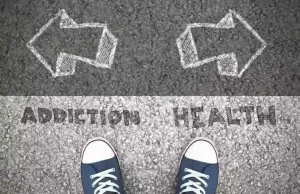
Steroid tablets should not be used for long periods to treat rhinitis, as serious side-effects may develop. Sometimes, if the cause of persistent rhinitis is unclear, or when the diagnosis is in doubt, your healthcare professional may suggest blood tests or skin prick allergy testing. When alcohol use begins to interfere with your daily life, it is time to seek treatment and find recovery from addiction. If you or a loved one is suffering from alcoholism, call us to get information about available facilities, treatments, therapies, helpful facts about alcohol abuse, and the path to recovery. Also known as “alcohol counseling,” behavioral treatments involve working with a health care provider to identify and help change the behaviors that lead to alcohol problems. If you have any of these symptoms, alcohol may already be a cause for concern.
Commonwealth University officials: Police training in Mansfield going strong

Over the past two decades, studies demonstrated that brief exposure to modest alcohol concentrations triggers generation of nitric oxide (NO) in the airway epithelial cells. This NO production stimulates a signaling pathway that involves the enzyme guanylyl cyclase, which produces a compound called cyclic guanosine monophosphate (cGMP). CGMP, in turn, activates cGMP-dependent protein kinase (PKG), followed by activation of the cyclic adenosine monophosphate (cAMP)-dependent protein kinase A (PKA).
Statistics on Substance Abuse & Co-Occurring Disorders
During alcohol ingestion, alcohol freely diffuses from the bronchial circulation directly through the ciliated epithelium where it vaporizes as it moves into the conducting airways (George et al., 1996). Indeed, alcohol vapor excreted into the airways in this manner forms the basis of the breath test used to estimate blood alcohol levels (Hlastala, 1998). Moreover, vaporized alcohol can deposit back into the airway lining fluid to be released again into the airways during exhalation. This “recycling” of alcohol vapor results in repeated exposure of the airway epithelium to high local concentrations of alcohol (George et al., 1996).
Zero-alcohol beverages appeal to teens and could encourage alcohol use, Australian study finds
Below is a list of some of the providers who are typically involved in alcohol treatment and the type of care they may offer. AUD is characterized by an impaired ability to stop or control alcohol use despite adverse social, occupational, or health consequences. Health care providers diagnose AUD when a person has two or more of the symptoms listed below. AUD can be mild (the presence of two to three symptoms), moderate (the presence of four to five symptoms), or severe (the presence of six or more symptoms). The chances of getting liver disease go up the longer you have been drinking and more alcohol you consume. New research suggests the risks of even moderate or light drinking may outweigh the benefits.
- They found there was no difference in pulmonary function or symptoms between the two groups and could account for all abnormal function on the basis of smoking alone.
- Acetaldehyde is a poisonous metabolite that can cause rapid heartbeat, nausea and flushing.
- Status epilepticus is a life threatening condition in which a person has a seizure lasting longer than 5 minutes without regaining normal consciousness or has more than one seizure within 5 minutes.
- These blood vessels fill the tissue that lines the inside of the nose.
- 12-step facilitation therapy is an engagement strategy used in counseling sessions to increase an individual’s active involvement in 12-step-based mutual-support groups.
Impact on your health

If you feel that you sometimes drink too much alcohol, or your drinking is causing problems, or if your family is concerned about your drinking, talk with your health care provider. Other ways to get help include talking with a mental health professional or seeking help from a support group such as Alcoholics Anonymous or a similar type of self-help group. Just as some people with diabetes or asthma may have flare-ups of their disease, a return to drinking can be seen as a temporary setback to full recovery and not as a failure. Seeking professional help can prevent a return to drinking—behavioral therapies can help people develop skills to avoid and overcome triggers, such as stress, that might lead to drinking. Most people benefit from regular checkups with a treatment provider. Medications can also deter drinking during times when individuals may be at greater risk for a return to drinking (e.g., divorce, death of a family member).
For people with epilepsy, alcohol may interfere with anti-seizure medications and increase the risk of seizures. According to a 2017 article, alcohol withdrawal seizures in those without epilepsy sneezing after drinking alcohol may occur 6–48 hours after a person consumes their last alcoholic drink. Heavy drinking, particularly withdrawal from heavy drinking, may trigger seizures in those with epilepsy.
- Understanding these complex relationships can help parents, mentors and health care providers better treat teens.
- There is even an anecdotal report that suggests small amounts of alcohol present in some inhaled corticosteroid preparations can act as a trigger for asthma for certain individuals (Antonicelli et al., 2006a).
- Another study in cultured human bronchial epithelial cells found that alcohol caused a concentration- and time-dependent increase in the expression of the tracheo-bronchial mucin (TBM) gene (Verma and Davidson, 1997).
- During end-stage alcoholism, a person may struggle with involuntary rapid eye movement (nystagmus) or weakness and paralysis of the eye muscles due to thiamin (vitamin B1) deficiency.
- Allergic rhinitis (be it hay fever or persistent rhinitis) tends to run in families.
Challenges to Addressing Co-Occurring Disorders

The perception sometimes is that someone struggling with addiction is the person wandering the streets in a stupor, but that is a stereotype that doesn’t always fit. Overall, 17.1% of the population, or 48.5 million people, met the criteria for a substance use disorder at some point in the past year. Yet fewer than 1 in 4 classified as requiring addiction treatment received medical care relating to their substance use.
- Having a mild intolerance to alcohol or something else in alcoholic beverages might not require a trip to a doctor.
- Policy and legislation can help address the issue of co-occurring disorders.
- Unfortunately, nothing can prevent reactions to alcohol or ingredients in alcoholic beverages.
- However, alcohol can also have effects with which many people may not be familiar.
- The economic burden of alcohol abuse and alcoholism in the United States is staggering, particularly lost productivity.
- Over time, this can lead to scarring and cirrhosis of the liver, which is the final phase of alcoholic liver disease.



